 |
 |
 |
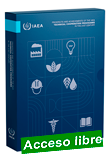 |
Prospects and Achievements of the IAEA Technical Cooperation Programme in the 21st Century
English ¦ 3 Vols ¦ Date published: 2024
This three volume publication provides an overview of the work of the International Atomic Energy Agency’s technical cooperation (TC) programme over the past two decades. It examines the programme’s achievements, presenting country overviews and case studies, programme facts and figures, and the findings of a survey conducted to measure the impact of the TC programme in the 21st century.
|
The publication covers the wide scope of TC programme activities, from regional, thematic and Member State perspectives, to build capacity in the safe, secure and peaceful application of nuclear science and technology, and outlines how this contributes to the achievement of the Sustainable Development Goals.
|
 |
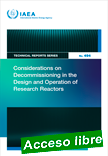 |
Considerations on Decommissioning in the Design and Operation of Research Reactors
STI/DOC/010/494 ¦ English ¦ 170 pages ¦ Date published: 2024
Decommissioning is a complex stage in research reactor projects, the safe and efficient implementation of which can be greatly facilitated if it is considered from the early stages and throughout the project’s lifespan. This publication provides guidance on facilitating decommissioning during the design, construction and operation stages of a research reactor’s lifetime, and on managing objectives and requirements during the transition period.
|
It presents good practices and lessons learned in the planning and preparation for decommissioning, as well as information relating to regulatory and management aspects. The publication is intended for individuals and organizations responsible for the design and operation of research reactors, as well as regulatory bodies, technical support organizations and decommissioning planners.
|
 |
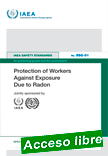 |
Protection of Workers Against Exposure Due to Radon
IAEA Safety Standards Series No. SSG-91 ¦ English ¦ STI/PUB/2098 ¦ 46 pages ¦ Date published: 2024
This Safety Guide provides recommendations on the protection of workers against exposure due to radon in existing exposure situations and planned exposure situations. It focuses on the identification of workplaces of concern and the implementation of requirements for radiation protection through the application of a graded approach and the principles of justification and optimization of protection and safety.
|
This includes exposure in workplaces such as buildings, underground locations and industrial premises involving the processing of naturally occurring radioactive material (NORM). The recommendations provided in this Safety Guide are aimed at governments, regulatory bodies and other relevant authorities, employers, workers, and service providers.
|
 |
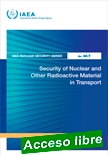 |
Security of Nuclear and Other Radioactive Material in Transport
IAEA Nuclear Security Series No. 46-T¦ English ¦ STI/PUB/2090 ¦ 64 pages ¦ Date published: 2024
This publication provides detailed guidance to States and their competent authorities on how to implement and maintain a nuclear security regime for the transport of nuclear and other radioactive material. The publication builds upon relevant recommendations in NSS No. 13 and NSS No. 14 and provides additional explanations of how to implement these recommendations in practice.
|
This publication is intended for nuclear security regulatory bodies and may also be useful to operators, shippers, carriers and others with transport security responsibilities to design their transport security systems.
|
 |
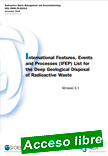 |
International Features, Events and Processes (IFEP) List for the Deep Geological Disposal of Radioactive Waste. Version 3.1
OECD. Nuclear Energy Agency ¦ NEA/RWM/R(2024)2¦ English ¦ 185 pages ¦ Date published: Nov 2024
The Nuclear Energy Agency’s (NEA) Integration Group for the Safety Case (IGSC) and its predecessor, the Performance Assessment Advisory Group (PAAG), have carried out activities related to the compilation and use of lists and databases containing the features, events and processes (FEPs) of relevance to safety and performance assessment studies for deep geological repositories (DGRs) since the early 1990s.
|
The NEA “International FEP (IFEP) List” is a comprehensive and structured list of generic FEPs, relevant to assessments of the post-closure safety of any DGR, which has been assembled through a long-term international collaboration between radioactive waste management organisations (RWMOs) through the NEA. It is intended to support national programmes in the production of their safety cases through the provision of a comprehensive and internationally accepted list of factors that may need to be considered when assessing the safety of DGRs. RWMOs have complemented the generic IFEP List with so-called “Project-specific FEP (PFEP) Lists” that are tailored to the specific wastes, geologies or disposal concepts of interest to them, and are therefore of less general applicability than the IFEP List. Individual Project FEPs have been related to relevant International FEPs in the past. In addition to the IFEP List, the NEA has commissioned the production of a number of “FEP Databases” that are designed to store the IFEP List and PFEP Lists in an easily navigable and searchable format.
|
 |
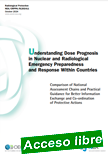 |
Understanding Dose Prognosis in Nuclear and Radiological Emergencies: Comparison of National Assessment Chains and Practical Guidance for Better Information Exchange and Co-ordination of Protective Actions
OECD. Nuclear Energy Agency ¦ NEA/CRPPH/R(2024)1 ¦ English ¦ 81 pages ¦ Date published: Oct 2024
The recommendations are based on the examination of those elements of the dose assessment chain which lead to variations in outputs that may influence the implementation of protective actions in the event of a nuclear or radiological emergency.
|
This includes factors such as the source term and weather forecast data employed, the different types of available atmospheric transport model (ATM), the estimation of radiation exposures by dose modelling, the various regulatory frameworks in place and the variety of decision support products that can be provided to decision-makers. Some elements, such as the selection of an appropriate source term, led to significant variations in the outputs between participating countries and territory and are therefore associated with a key recommendation to encourage greater collaboration on access to source term data and enhanced cross-border information exchange. This report explores each element of the dose assessment chain in detail to generate its key findings and recommendations.
|
 |
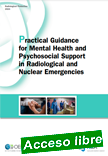 |
Practical Guidance for Mental Health and Psychosocial Support in Radiological and Nuclear Emergencies
OECD. Nuclear Energy Agency ¦ NEA No. 7665 ¦ English ¦ 104 pages ¦ Date published: 2024
Emergency preparedness programmes around the world are designed to protect people from the health effects arising from radiological releases. The science behind these programmes is both well known and widely studied. However, as evidenced during the Chernobyl and Fukushima Daiichi accidents, radiological emergencies also give rise to mental health issues and psychosocial consequences associated with the impact of protective measures and medium to long-term socioeconomic disruptions.
|
Mental health and psychosocial support (MHPSS) can therefore be just as important because it restores people’s ability to take care of themselves and of others. This publication provides a comprehensive guide to integrating MHPSS in radiological protection strategies during a nuclear or radiological (N/R) emergency. It operationalises the World Health Organization’s 2020 framework for MHPSS in such emergencies, covering all phases: preparedness, response, and recovery. The guide is aimed at official managers, decision-makers, and specialists involved in N/R emergency planning, response and recovery (early, intermediate, and long-term), as well as MHPSS specialists in large-scale disasters and all-hazards emergency settings. It emphasises the importance of understanding the basics of radiation exposure, emergency management, and public health concepts. The guide supports an all-hazards approach and also addresses unique risk factors of N/R emergencies, such as the perception of risks associated with radiation exposures. It includes a summary table of actions and detailed action sheets for various themes, e.g. integrating MHPSS into needs assessments, public communication strategies, services for host communities, clinical referrals, and mental health monitoring.
|
 |
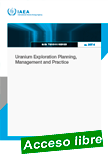 |
Uranium Exploration Planning, Management and Practice
IAEA-TECDOC-2074 ¦ English ¦ 180 pages ¦ Date published: 2024
The objective of this Technical Document is to provide clear guidance including best practices and recommendations for the planning, management and implementation of uranium exploration projects. It provides a systematic approach to the development and implementation of uranium exploration programmes. The intended audience includes, but is not limited to, government decision makers at all levels, governmental officers in mineral resources, government geological surveys, mining operators and individuals, private companies and universities with interests in mineral exploration.
|
.
|
 |
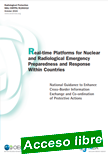 |
Real-Time Platforms for Nuclear and Radiological Emergency Preparedness and Response within Countries
National Guidance to Enhance Cross-Border Information Exchange and Co-ordination of Protective Actions
OECD. Nuclear Energy Agency ¦ NEA/CRPPH/R(2024)2 ¦ English ¦ 73 pages ¦ Date published: 2024
A real-time platform (RTP) is the generic term for a platform used for managing data and information in radiological and nuclear emergencies. For example, this may include platforms used for collating radiological monitoring data and/or situational awareness.
|
The focus of this report is to explore the use of existing RTPs in NEA member countries. The findings presented illustrate tips to design an RTP and areas of improvement related to the development and operation of RTPs within countries, with a particular focus on the use of RTPs to enhance cross-border and regional information exchange and the co-ordination of protective actions. One of the key recommendations that emerged from this analysis is the need for greater international collaboration between RTPs (through the development of interfaces for instance), along with the need to maintain and expand the inventory of RTPs used within NEA member countries as initiated through the work of this EGRT. A comprehensive inventory will ultimately serve as a global reference tool. The analysis is based on data and information collected in the form of a survey sent to national governments and regulators responsible for nuclear and radiological emergency preparedness and response. The survey gathered information on the development and maintenance of RTPs, the content available and the cross-border arrangements with other countries and international organisations. Nineteen NEA member countries responded to the survey, as well as the European Union through the European Commission, providing a sound base to draw the conclusions and recommendations presented in this report.
|
 |
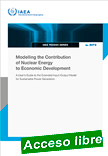 |
Modelling the Contribution of Nuclear Energy to Economic Development
A User’s Guide to the Extended Input–Output Model for Sustainable Power Generation
IAEA-TECDOC-2073 ¦ English ¦ 126 pages ¦ Date published: 2024
This publication presents the structure and assumptions supporting the EMPOWER tool and provides a practical guide on using EMPOWER for analysing the macroeconomic impacts associated with nuclear projects and programmes. EMPOWER stands for Extended Input-Output Model for Sustainable Power Generation.
|
The IAEA developed this tool involving research teams from its Member States, particularly in the context of a Coordinated Research Project (CRP) on "assessing national and regional economic effects of nuclear programs". EMPOWER belongs to the class of input-output models, commonly used to evaluate the impact of investments in large infrastructure projects, which offer the ability to analyse the effects of exogenous shocks in a relatively simple way. This type of model describes the interdependencies between the different sectors of the economy through an input-output table and several feedback mechanisms. This report is intended for macroeconomic analysts, energy planners and decision-makers exploring ways to inform energy policies and strategies at the governmental level as well as at ministries leading or contributing to energy planning studies.
|
 |
| |
|
|

|
|
|
| |
|
|
| |
| |
|
|
| |
| |
|
|
| |
| |
|
|
|
| |
| |
